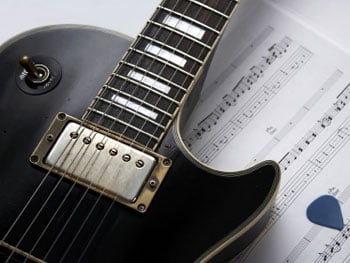Computer Recording
Contents |
Introduction
Computer recording is a standard today among both studios and home users, even though there is some state-of-the-art studios that still uses analog tapes. The evolution has been developing very fast since it first was introduced round the 70/80's. In this article I will cover some of the history and the basic concepts and terms of digital recording.
History
The art of digital recording was pioneered by Tom Stockham at MIT as early as 1961, when he was making the first digital tape recordings with the assistance of a large TX-0 computer and a A/D-D/A converter from Bernie Gordon at EPSCO. He later founded the company Soundstream that recorded the first 16-bit digital recording in 1976 at the Santa Fe Opera. However, digital technology was present even before in instruments like the Hammond organ and the Mellotron and in some effect-processors.
In 1975 Sydney Alonso/Jon Appleton/Cameron Jones developed the Synclavier digital synthesizer at Dartmouth College. They formed the New England Digital Corporation the next year (later became Demas) and sold their product mostly to the recording industry. In 1979 was the Fairlight synthesizer introduced, which actually was a workstation capable of making full recordings stored on floppy-disks.
The beginning of the digital era came when Philips/Sony made a collaboration about the standards of the compact disc in 1980-81, even though there was some attempts to make a standard before. (Betamax,Pioneer Laserdisc,PCM) The specifications were 16-bit encoding and a sampling frequency of 44,100 per second, which still is the specification of a compact disc. (CD) The first truly digital recordings were made in 1982 by Tom Jung at the jazz-label DMP, who recorded directly down to to disc.
In 1981 was the first "white papers" of the MIDI-specification released by Dave Smith and Chet Wood from Sequential Circuits (Prophet-5) at the AES fair. This was truly revolutionary and two years later, in 1983, the first synthesizers from Roland, Yamaha (DX7) and Sequential Circuits implementing the MIDI protocol. (MIDI stands for Musical Instrument Digital Interface, which is a technology that describes a user's interaction with a digital instrument, rather than performs any actual computer processing. ed.note)
The use of MIDI in home/smaller studios wasn't established until 1986 when Steinberg made their first release of Cubase for the ATARI-platform, even though there was some programs even earlier at the AMIGA-platform. LOGIC was released about the same time, and for years a battle raged between the two opponents.
The DAT-format (Digital Audio Tape) introduced in 1986, was setting a new standard in digital mastering, but it took several years until the prices of consumer machines dropped to reasonable levels.
The next landmark came in 1991 when ALESIS released their first multitrack for digital recording based on Video tapes. 3M has made multitracks for digital recording since the beginning of the 80's, but due to it's price, there was only studios like Abbey Road, Polar Studios and others that really could afford the digital technique. The 8-channel A-DAT was a technical revolution and allowed up to 16 machines to be used in conjunction. Originally priced at 4000$, it made it possible for smaller studios to adopt the digital technique.
Another headline
Lorem ipsum dolor sit amet, consectetur adipisicing elit, sed do eiusmod tempor incididunt ut labore et dolore magna aliqua. Ut enim ad minim veniam, quis nostrud exercitation ullamco laboris nisi ut aliquip ex ea commodo consequat. Duis aute irure dolor in reprehenderit in voluptate velit esse cillum dolore eu fugiat nulla pariatur. Excepteur sint occaecat cupidatat non proident, sunt in culpa qui officia deserunt mollit anim id est laborum.
Smaller title
Lorem ipsum dolor sit amet, consectetur adipisicing elit, sed do eiusmod tempor incididunt ut labore et dolore magna aliqua. Ut enim ad minim veniam, quis nostrud exercitation ullamco laboris nisi ut aliquip ex ea commodo consequat. Duis aute irure dolor in reprehenderit in voluptate velit esse cillum dolore eu fugiat nulla pariatur. Excepteur sint occaecat cupidatat non proident, sunt in culpa qui officia deserunt mollit anim id est laborum.
Even smaller title
Duis aute irure dolor in reprehenderit in voluptate velit esse cillum dolore eu fugiat nulla pariatur. Excepteur sint occaecat cupidatat non proident, sunt in culpa qui officia deserunt mollit anim id est laborum.
Third Headline
Lorem ipsum dolor sit amet, consectetur adipisicing elit, sed do eiusmod tempor incididunt ut labore et dolore magna aliqua. Ut enim ad minim veniam, quis nostrud exercitation ullamco laboris nisi ut aliquip ex ea commodo consequat. Duis aute irure dolor in reprehenderit in voluptate velit esse cillum dolore eu fugiat nulla pariatur. Excepteur sint occaecat cupidatat non proident, sunt in culpa qui officia deserunt mollit anim id est laborum.
Fourth Headline
Lorem ipsum dolor sit amet, consectetur adipisicing elit, sed do eiusmod tempor incididunt ut labore et dolore magna aliqua. Ut enim ad minim veniam, quis nostrud exercitation ullamco laboris nisi ut aliquip ex ea commodo consequat. Duis aute irure dolor in reprehenderit in voluptate velit esse cillum dolore eu fugiat nulla pariatur. Excepteur sint occaecat cupidatat non proident, sunt in culpa qui officia deserunt mollit anim id est laborum.
Related GMC Lessons
(this is a speical headline that is optional)
See also
(this is a speical headline that is optional)






